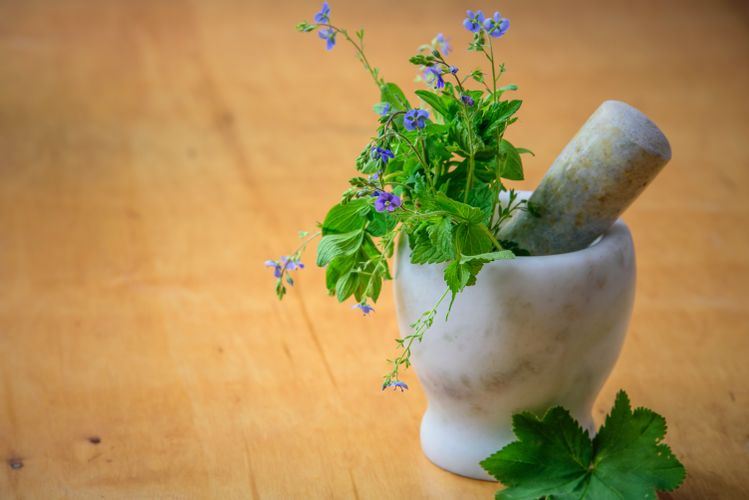A Men's Health article highlighted growing research that shows ice can hinder the healing process for soft tissue (muscular) injuries rather than help it.1
Essentially, while ice helps reduce inflammation and reduces pain, it also reduces circulation which delays healing.
The ideal remedy during the early stages of an injury would reduce swelling while also promoting circulation. This combination minimizes pain while allowing the body's natural inflammatory healing process to take place.
This is something that Chinese medicine has known for many centuries and it offers a better alternative to ice via Chinese herbs and acupuncture to help with acute soft tissue injuries and muscle soreness.
The Healing Process
Generally, soft tissue or muscle injuries go through a three step healing process as highlighted in a 2016 Study:2
Inflammation: There is injury to the muscle tissue, and inflammation occurs to further protect the area and begin the body's natural healing process. There can be pain, swelling, bruising, redness, and heat in the area around the injury. This happens within the first few days after the injury. It is important to promote circulation during this early phase so that the inflammatory process is not delayed.
Regeneration & Repair: During the second step of healing, muscle fibers begin to regenerate and repair in a multi-step process. The damaged tissue is either replaced with similar tissue, or replaced with scar tissue. There can still be pain during this phase and there is usually also impaired muscle function and range of motion. This phase starts around 4-5 days after the injury and tapers off after 3-4 weeks. It can last up to 3 months for more serious injuries. It peaks around 2 weeks, which means it is important not to rush back from a muscular injury because this can impair the healing process.
Remodeling: The regenerated muscle fibers mature and attain normal function. The goal is to build strength and regain full range of motion. There can be lingering stiffness and reduced range of motion if the healing process did not happen smoothly. This stage usually begins towards the end of the first month and can last for months or even over a year.
Why Ice Doesn't Help
The way ice reduces inflammation is by vasodilation which reduces blood circulation. One 2013 study from the Journal of Strength and Conditioning Research found that using ice can delay recovery from exercise induced muscle damage.3
Fatigue after exercise induced muscle damage was greater after 72 hours when using ice versus not using it. It constricts blood vessels which prevents fluids from reaching the injury site. While this helps reduce inflammation and pain, it delays the healing process from moving into the regeneration and repair phase. In the acute inflammation phase, damaged muscle cells are removed and make way for new cells to replace them in the regeneration phase. Ice delays this from happening which ends up increasing healing time.
The study concluded that: "As it stands, our results provide evidence that topical cooling does not enhance and seems to delay the return to normal of muscle damage markers and subjective fatigue feeling after eccentric exercise. The surge in tissue oxygenation after removal of the cooling application may be part of the mechanisms involved in the delayed recovery. Collectively, these results indicate that intervention with topical cooling disrupts the normal adaptive responses to exercise".
A recent 2019 study from the European Journal of Applied Physiology showed that using cold water immersion lowered the body's release of inflammatory markers that signal the body to initiate it's natural healing process.4 The study concluded, "[Cold Water Immersion] CWI blunted the T and cytokine response after a bout of resistance exercise. These results indicate that CWI results in an altered anabolic response and may help to explain the previous observation of attenuated hypertrophy when CWI is used after resistance exercise".
For more information on the inflammatory process please see these articles:
1)https://www.sciencedirect.com/science/article/abs/pii/S1043466617302922
2)https://www.mdpi.com/2076-3921/7/1/17
How Acupuncture and Chinese Medicine Can Help
Acupuncture and Chinese medicine have treated pain for thousands of years using principles based on nature and the body's natural healing abilities. These principles essentially state that once you identify an imbalance, you need to do the opposite to promote healing and better health.
In the case of an early stage muscle injury where there is swelling, inflammation, heat, and bruising (blood accumulation), doing the opposite would mean cooling the area and promoting blood movement to promote the body's healing response.
Kamwo Herbs in New York City has formulated a line of sports medicine herbal formulas that address the various phases of injury.5 These are in the form of herbal pastes, tinctures, and oils that are applied topically to the injury.
Kamwo characterizes the three stages of healing similarly to what is mentioned above and offers treatment options to maximize healing in each phase. Generally, the early stages of injury call for cooling and blood moving formulas, while the later stage formulas call for warmer and more gently moving formulas.
Acute: This corresponds to the inflammation phase and last from 1-7 days based on the severity of the injury. As mentioned above, there is usually pain, swelling, bruising, and possibly heat around the injured area. The treatment principles in the acute phase include stopping pain, cooling the injured area, and promoting blood circulation around the injury.
Sub-Acute: This corresponds with the regeneration and repair phase and can last for a few weeks after the acute phase is over. It is characterized stiffness and reduced range of motion of the injured area, along with a reduction in pain and swelling. Promoting circulation in still emphasized in this phase, and warmer herbal formulas can be used to address the stiffness and help improve range of motion.
Chronic: This corresponds with the remodeling phase. If there is improper treatment during the first two phases there can still be lingering pain, stiffness, and reduced range of motion. The formulas in this phase are more balanced and seek to address any remaining issues.
Acupuncture can also be used in any of the three phases of the healing process. In the first phase where there is pain, inflammation, bruising, and redness, acupuncture is usually done above and below the injury site (rather than into it directly) to promote circulation and reduce swelling. Once the inflammation and bruising have subsided, acupuncture is usually done around and into the injured muscle tissue to release soft tissue constriction, promote circulation, and regain muscle function and range of motion.
Other modalities of Chinese medicine like electroacupuncture, cupping, gua sha, heat lamp therapy, moxibustion, nutritional counseling, and exercise (qi gong & tai chi) can be incorporated as well.
Seek Proper Care When Needed
While acupuncture and Chinese medicine can help with acute and chronic conditions, it is important to consult with a licensed physician for orthopedic conditions to rule out any fractures or severe muscle tears that may require medical intervention. For serious injuries, seek medical care immediately.
The stages mentioned above don't look the same for everyone. Before trying any topical or internal herbal formulas for sports injuries, it is important to consult with a licensed acupuncturist and board-certified herbalist to make sure that the treatment is appropriate for your condition. There are instances where certain herbs may be contraindicated if they are not appropriate for your individual case.
References:
1 https://www.menshealth.com/fitness/a29710918/icing-sore-muscles/
2 https://www.ncbi.nlm.nih.gov/pmc/articles/PMC4958098/







